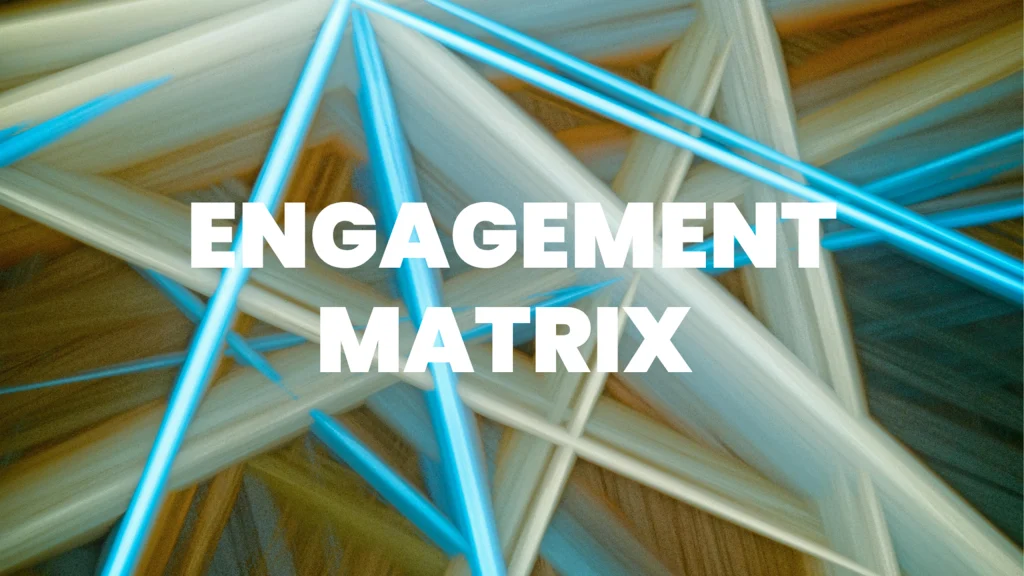In a world where teaching and research are meticulously tracked, one vital piece of academic work too often slips through the cracks: engagement.
From mentoring student internships to co-creating courses with businesses, many educators regularly bridge the gap between the university and the world beyond it. But how do institutions recognize that work? How do educators capture the depth and impact of these interactions? The Engagement Mapping Matrix, developed through the Map EEC project, aims to change that.
What Is the Engagement Matrix?
At its core, the Engagement Matrix is a structured tool for mapping, reflecting on, and measuring the engagement efforts of educators—with a focus on enhancing learning outcomes and strengthening ties between universities and external partners.
It brings together:
- The type of engagement (Is it co-creation, outbound, or inbound?)
- A description of the activity (What actually happened?)
- Indicators—both quantitative (e.g. number of students, partners, hours) and qualitative (reflections, feedback, student reactions)
- Contextual notes, including resource needs, obstacles, and outcomes
But it’s more than just a form. It’s a flexible framework that can serve two powerful functions:
- As a self-assessment tool for educators to document and reflect on their work.
- As a strategic instrument for institutions to catalogue, support, and reward engagement in meaningful ways.
“Engagement mapping is a process instrumental to recognizing educator’s engagement focused on enhancing learning experience and outcomes.” — Map EEC Matrix Framework
How It Works?
The matrix categorizes engagement into three main types, each with unique characteristics:
- Value Co-Creation
- Activities where educators work with external partners (e.g., companies, NGOs) to plan or improve a course—often without direct student involvement.
- Examples: co-developing assignments, joint curriculum planning, securing external funding for learning initiatives.
- Outbound Collaboration
- Students leave the campus to learn in the field.
- Examples: internships, site visits, fieldwork, service learning.
- Inbound Collaboration
- External partners come to campus to contribute to the learning process.
- Examples: guest lectures, practitioner panels, innovation days.
The matrix allows educators to document these experiences at various levels, from a single module to a full academic program, offering flexibility across disciplines and institutions.
A Real-World Example
Take the Applied International Marketing course offered at master level in Spring 2024. Here’s what mapping it looks like:
- Type: All three—value co-creation (course design with SMEs), outbound (student field visits), and inbound (guest lectures).
- Partners: 12 SMEs, 5 governmental organizations.
- Impact: 55 students, high course evaluations, and repeat participation from partners.
- Qualitative Feedback: Students appreciated working with real companies… government partners see this as their longest-lasting educational partnership.
9 out of 10 SMEs expressed a desire to participate again—proof of mutual value created by academic engagement.
Why Engagement Matters?
Until now, much of engagement work went unrecognized—celebrated informally but absent from performance reviews or promotion files. The Engagement Matrix flips that narrative.
It empowers educators to:
- Showcase impact beyond the classroom
- Track contributions to institutional goals
- Inform professional growth and performance reviews
And for institutions, it becomes a strategic lens: identifying strengths, gaps, and opportunities in external collaboration.
“The matrix isn’t just a tracker. It’s a culture-changer.” — IMTBS Testing Lab Participant
What’s Next?
With testing labs now complete across Map EEC partner institutions Stiftelsen Högskolan i Jönköping (JU), Munster Technological University (MUT), Institut Mines-Télécom Business School (IMT-BS), University Industry Innovation Network (UIIN) and University of Bucharest (UB), the matrix is evolving into a hands-on tool. The next phase will explore broader institutional adoption—ensuring this tool not only exists but thrives as part of how universities reward engagement.
As higher education continues to expand its role in society, the Engagement Matrix stands as a practical, powerful way to ensure educators’ external contributions are finally seen, valued, and supported.
Authors: Nina Brankovic & Medisa Focic

